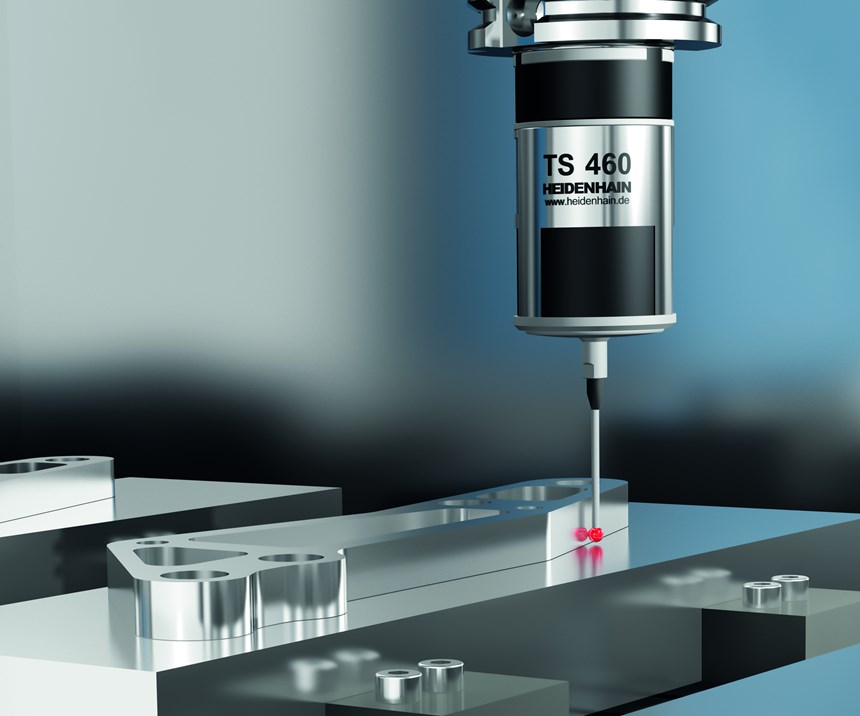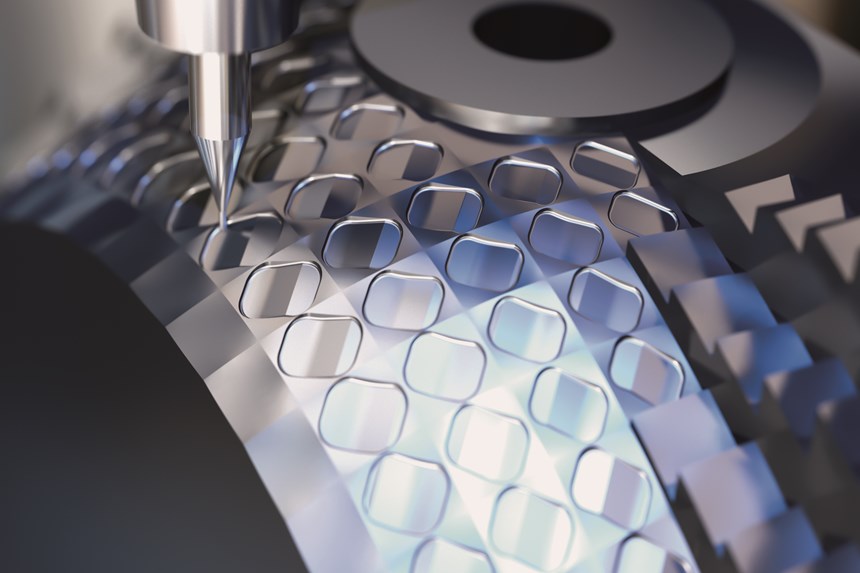Dimensional and contour errors need to be so low in moldmaking as to be barely measurable and must certainly never be visible. These requirements are increasingly at odds with demands for higher productivity and lower costs.
Many powerful control functions offer possible solutions to the key questions that arise between the conflicting demands of a production process that is highly precise and at the same time highly efficient. The user can take advantage of these functions that bring out the best of a machine in any machining scenario while efficiently meeting workpiece accuracy requirements.
Featured Content
Let’s take a look at some features and functions of today’s advanced control technology.
Machine Tuning
One particular advanced control technology includes a tolerance function that allows a mold builder to precisely tune the machine setup by adapting the contouring deviation T to the task at hand, individually specifying the path width that is available to the control. The mold builder can so directly influence the maximum attainable contouring feed rate and machining time, in particular for contour elements with numerous changes in direction, which is a common characteristic of free-form surfaces. Some machine tool builders also offer their own cycles based on a tolerance function.
In addition to the contouring deviation T that the mold builder enters, these cycles make further modifications to the machine setup that the OEM had programmed for specific machining operations, such as roughing, finishing, or pre-finishing.
An advanced dynamic prediction function offers another possibility for optimizing the machining process. It starts with the data quality of the NC program and enables optimized motion control for feed axes in three- and five-axis milling. Insufficient quality of data frequently causes poor motion control, leading to the inferior surface quality of the milled workpieces.
With an advanced dynamic prediction function, a control can dynamically calculate the contour in advance and adapt the axis speeds in time for contour transitions using acceleration-limited and jerk-smoothing motion control. As a result, clean surfaces can be milled in short machining times even for contours with highly irregular point distributions in neighboring tool paths.
The strengths of advanced dynamic prediction are apparent, for example, in the resulting symmetrical feed behavior on forward and reverse paths during bidirectional finish milling and in the form of particularly smooth feed-rate curves on parallel milling paths.
improve mold machining with powerful control functions
Dynamic Motion
Another collection of functions of advanced control technology combines high accuracies with dynamic motions. These functions minimize not only forces that affect the mechanics of a machine tool during operation, but also the resulting deviations at the tool center point.
A cross compensation function compensates for forces that are introduced by dynamic acceleration processes and that briefly deform parts of the machine, leading to deviations at the tool center point. Regardless of the actual acceleration, cross compensation makes either more precise production with better surfaces possible, or it significantly reduces the machining times by increasing the jerk.
An active vibration damping function suppresses dominant low-frequency vibrations and permits fast vibration-free milling. This makes it possible to set high jerk values. Machining times can be reduced without compromising surface quality. In particular, the combination of cross compensation and active vibration damping helps reconcile the contradictory requirements of accuracy and speed. In practice, this functionality provides greater efficiency during the milling of high-quality, free-form contours.
A load adaptive control function continuously determines the current mass for linear axes, or the mass moment of inertia for rotary axes, and adapts the feedrate control to the values measured at any given time. This improves the dynamic accuracy of the axis for every situation under load, enabling the use of optimized jerk values for the feed axes on the workpiece side. The result is a shorter machining time since the feed axes reach the desired positions sooner. In addition, this function compensates for all changed friction values and therefore ensures higher contour accuracy.
Clean surfaces can be milled in short machining times even for contours with highly irregular point distributions in neighboring tool paths.
Accuracy Improvements
Accuracy requirements are becoming ever more stringent, particularly in the realm of five-axis machining. Complex parts must be manufactured with both precision and reproducible accuracy, including over extended periods of time. However, during machining, machine components are subjected to relatively high-temperature fluctuations. So, the kinematic transformation chain should be adapted correspondingly. There is a software option that not only handles the recalibration but also saves all data regarding modifications to the kinematic configuration.
A triggering 3-D touch probe is used to measure the position of a precise calibration sphere at various rotary axis settings. The result is a report providing the current actual accuracy during tilting. If desired, the software can also automatically optimize the measured axes simultaneously, and requisite modifications to the machine data are also automatically implemented. The mold builder needs no detailed knowledge about the kinematic configuration of the machine and can recalibrate the milling machine in just a few minutes. If the calibration sphere is permanently mounted on the machine table, then this procedure can even be performed as an automated step between the individual machining processes.
Radius cutters whose geometry deviates from the ideal circular shape also negatively affect the machining result, since the contact point of the cutter radius with the workpiece as calculated by the control do not match the value for that of the actual radius.
A software and touch probe combination is a powerful method for three-dimensional tool radius compensation. A compensation table enables the specification of angle-dependent delta values that describe this deviation. The control uses this data to compensate for the radius value defined at the current tool contact point on the workpiece.
For the contact point to be determined with precision, the NC program must be generated with surface-normal blocks (LN blocks) by the CAM system. These surface-normal blocks define the tool position and the contact point on the workpiece, and optionally specify the tool orientation relative to the workpiece surface.
Automation Monitoring
If the machine tool provides perfect machining results, then the associated processes should also run in an optimized manner. Intelligently networked systems for job planning, job management and job monitoring should provide a comprehensive view of job lists, running processes, work progress and any necessary interventions.
A batch process function organizes pending jobs clearly and in a logical manner. To accomplish this, the user creates a lineup of jobs directly on the control. These might be jobs for the approaching night shift, for an entire day, or for the upcoming weekend. The batch process function checks this job list and provides important information prior to machining, such as when manual interventions will be necessary and how long the machine will be utilized. This function helps to precisely plan the machining sequence and facilitate a smooth execution of pending jobs.
Monitoring software provides a fast, real-time overview of the current machine and job statuses for all connected machines. This software enables machine data acquisition and provides information about machine messages. The user can maintain an overview of each machine tool and job at all times. The user can also access the monitoring software from any device featuring an up-to-date web browser.
RELATED CONTENT
-
How to Justify New Machine Tool Technology
A look at some of the factors influencing the success of your machining center investment.
-
How to Analyze and Optimize Cutting Conditions to Reduce Cycle Time
Plastic injection mold design and manufacturing company puts NC program optimization software module to the test. The results were surprising.
-
Moldmakers Deserve a Total Production Solution
Stability, spindle speed and software are essential consideration for your moldmaking machine tool.













.jpg;maxWidth=970;quality=90)




